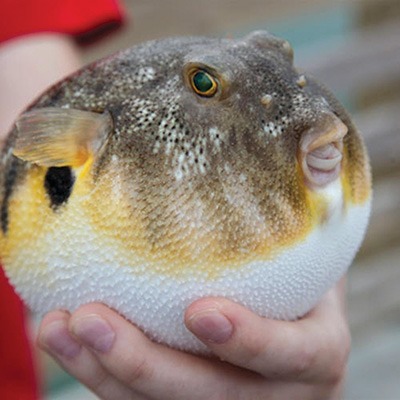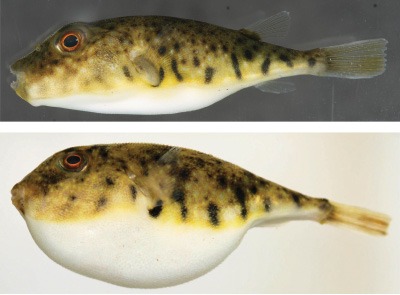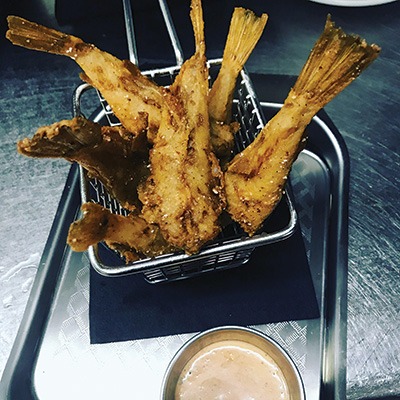
by Tom Chillemi –
Sugar toads were long ignored by most as food. But for those who know, these “puffers” are a delicacy.
Steve Hearold of White Stone, whose family has lived on Indian Creek for seven generations, is one of those in the know.
“When I was coming along, a lot of people threw them away because they were just so ugly,” said Hearold. “But my family cleaned them and that’s what we ate. We ate off the land.”
Now, a lot of up-scale restaurants have them on the menu and gourmets have learned what Hearold has known all his life — sugar toads’ meat is sweet, light and flaky.
The majority of sugar toads are caught in the spring and late summer during migration, said Hearold. They keep well frozen and make good eating during the winter.
The Northern Puffer possibly got the name sugar toad from a waterman who said they are “sweet as sugar and ugly as a toad.” Their defense when threatened is to blow up like a balloon, which also gives them the name blow toads, swell toads and puffer fish.
“When they swell up they look like beach balls,” said Hearold.
By any name they’re good eating. When fried crunchy they go well with any number of dipping sauces. Terry Murphy of Urbanna likes his sugar toads fried in House Autry southern style seafood batter. Others like to grill them.
“They’re good any way you cook them,” said Murphy. “Just don’t bite the middle.”
Gina Stump, owner of Sandpiper Restaurant in White Stone, simply preseasons them with pepper, salt and paprika. She dips them in beer batter and for best results, recommends deep frying.
Bryan Byrd, owner and chef at Dredge in Irvington, breads them in his signature seafood house breading, fries them and serves with a remoulade dip.

Chicken of the sea
Sugar toads are often called “chicken of the sea.” That might be because, like a chicken leg, they are eaten from the side. They only have one big bone, which runs down the middle. So in that respect they are almost a filet.
Chris Pritchett of North in Mathews County has been a waterman for more than 35 years. Most anglers won’t catch sugar toads with a hook and line, although occasionally they might snag one, said Pritchett. Watermen use peeler crab pots baited with crab or clam shells to trap sugar toads.
He said sugar toads were popular in the late 1980s and early 1990s but when their numbers dwindled so did demand. After about 10 years their population rebounded. “They’re right popular now.”

Pritchett works his sugar toad pots when they are running to supplement his crabbing season. “I enjoy doing it.”
He delivers them skinned. He’s perfected a skinning technique handed down from watermen and he can clean 10 to 15 in a minute. He cautions anglers who might snag one to wear gloves. Bare hands are no match for sugar toads’ tough, prickly skin.
Most people fry them, but Pritchett prefers to put them in aluminum foil and steam them on the grill or in the oven with butter and seasoning for about 10 minutes. The meat will fall right off the center bone, he said.
Sugar toads tend to follow the speckled trout and spot, said Pritchett. “They hang out in a lot of places that speckled trout hang out, like around docks.” Anglers fishing for spot might hook one in late August or early September, he added.
“They kind of like to hang out on the edges of grass beds,” he explained. “That’s normally where I’ll catch them, in the shallow water. A lot of people that are speckled trout fishing will get into them and complain about them taking their bait, especially if they’re using live bait.”





